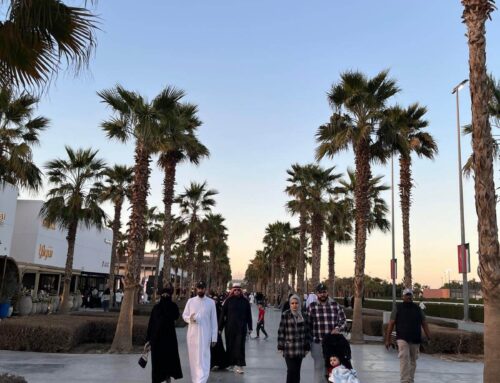Chinese Tea: A Beginner’s Guide
As an American, I knew very little about tea before I moved to China and to be honest I didn’t like tea very much. All I had ever tried was tea from a tea bag and it just isn’t very good. However, when I moved to China I kept hearing about “real” Chinese tea and for the first time I was interested in trying. Little did I know this would open up a whole new world to me. So if you are here to learn about tea for the first time, you’re in the right place.
One cool thing about living in China is that you can actually go see where tea is grown. We did just this one summer while exploring the Chinese Province of Yunnan which is where, I think, the best tea in China comes from. Although these are fighting words, as each region in China thinks their tea is better. To be honest it’s all pretty amazing!
We took a tea tour which taught us a lot about how tea is grown, processed, and then sold in markets all throughout China and I wish more often, the world. This post is a compilation of things I learned on that trip and for the past 5 years as I dove head first into the art of tea. This information has a lot of caveats and tangents as tea is so complex. If you want to go further and learn all of the details, I recommend watching Mei Leaf on YouTube who does a wonderful job getting into the weeds on Chinese tea.
Tea in China is vast. There are many different types and each type has different subtypes. People get so specific about tea that they want to know which mountain it was grown on, at what elevation, during what time of the year it was picked, and if there were any walnut trees nearby. Seriously, these factors can all change the taste of the tea. At first I thought they were too specific but once I started comparing teas with different growing conditions, you can actually taste the difference. Tea in China can be so complex. But this complexity made it something that piqued my interest from the very beginning.
6 Categories – Types of Chinese Tea
When getting into Chinese tea you first need to learn the 6 categories. Generally most teas are grouped into one of six categories: white, green, yellow, red (black), wulong (oolong), and pu’er (pu erh). Because tea is complex, in each of these categories there are many different subtypes, but for just starting out these are the basics.
Tea all comes from the same plant so the differences in category comes from what they do to the tea after it is picked. The general steps to process tea are: picking, withering, shaking and bruising, oxidizing, heating to fix, rolling, heating to dry, roasting, and then fermenting. Not all teas go through all the steps. Some steps are done for different amounts of time or in different orders. Each variation makes a different variety or subtype of tea.
White Tea 白茶
White tea goes through the most simplistic and basic processing of all the teas but that means the flavor is all in the details. After picking the tea, the farmers wither and dry the tea at the same time using nature (as opposed to cast iron pan heating). They have to stop the oxidation through drying without the use of heat. This creates a simple and pure form of loose leaf tea. If done correctly, and well, it creates a very interesting, subtle, sweet flavor.
Recommendation: Bai Mu Dan (白牡丹), or White Peony tea, which to me tastes like an autumn leaf pile in the best way possible. It’s sweet and subtle and oh so delicious.


Green Tea 绿茶
Green tea is picked and then withered. Then the leaf is heated up to lock in that “green” fresh flavor but only for a short amount of time. The oxidation process is stopped quickly which means green tea has a low amount of oxidation. Green tea is best served in the year that it is picked. Since most green tea is from the spring harvest, it’s very expensive right away and starts to lose value as the year goes on. By the next year, last year’s harvest isn’t worth buying as the current harvest is more flavorful.
Recommendation: Most green teas have a distinctive vegetal or green flavor. But there are subtle differences like Longjing (龙井茶) which is a variety of pan-roasted green tea from the area of Longjing Village in Zhejiang Province. It has more of a nutty, roasted flavor. While the Huangshan Maofeng (黄山毛峰) is more classically green tea with a slightly floral flavor from Anhui Province.


Yellow Tea 黄茶
Yellow Tea is one I was only able to find once when I was in China. This tea is very rare and not very easy to come by. The process is similar to green tea but it is stored in a moist warm environment which takes the green color out and leaves a more yellow leaf. While foreigners abroad seemed to find this exotic, many locals don’t even know about it or seem to place as much importance on it. We asked hundreds of tea sellers and farmers for it and only found it once. Honestly, it didn’t taste much different than green tea so I wouldn’t go out of my way for it again.
Red (Black) Tea 红茶
Most people are familiar with black tea, it’s generally what people see in tea bags. We learned that the tea in the bag tea is literally the broken or crushed leaves that fall to the ground during the processing of quality tea. It’s swept up and sold to tea bag companies. The discrepancy in naming from black tea to red tea comes from a simple misunderstanding, as all things language are. Chinese have always called it red tea (hóngchá) from the color of the liquid brewed tea. While foreigners looked at the dark black dried leaves and called it black tea. Either way it refers to the same product.
Red tea is made by picking and withering the tea, same as green tea. But then it is rolled (think like kneading dough) before the heating process. Then the heating process lasts longer which fully oxidizes the tea, giving it the dark color of the leaves and the darker color of the brewed tea.
Recommendation: Dian Hong (滇红茶) is a red tea from Yunnan with sweet honey floral notes and is usually stronger than other teas.


Wulong (Oolong) Tea 乌龙茶
Translated as black dragon tea, you will see this tea spelled either wulong or oolong. The difference in spelling comes from phonetic transcription of the Chinese characters that approximates the sound of spoken Chinese. So technically both are correct.
This tea is the most arduous to make. After picking, it is withered, then bruised and oxidized, then heated, then rolled, then heated again to dry it and then some are roasted. This tea also can have very little oxidation, which creates more of a green tea flavor or can be fully oxidized which gives it a very dark taste.
Recommendation: One popular type of green tea style wulong is Tie Guan Yin (铁观音) which tastes almost like the ocean. Darker wulongs are becoming very popular recently and we recommend trying the Da Hong Pao (大红袍) which has a smokey burnt flavor.


Pu’er (Pu erh) Tea 普洱茶
This type of tea is my favorite tea. There are two types of pu’er: sheng pu’er (raw) and shu pu’er (ripe). See more on the differences below. While the other types of tea can be grown anywhere, pu’er is special in that it can only be grown in the Pu’er region of Yunnan, China.
Sheng pu’er is made by withering, dry frying in a wok to stop the oxidation process (otherwise it would turn into black tea), rolling, and then sun-drying. Sheng pu’er is coveted in that it’s like a collectors item. The tea is allowed to age and ferment over years which will change the flavor. This type of tea is often sold pressed in the form of a circular flat cake which is called a bing. Young sheng pu’er, to me, has more berry sour notes which I love. As sheng pu’er ages it gets darker and more bookish. I have some sheng pu’er from 2007 that has a hint of old library books. Obviously in the best way possible.


Shu pu’er is made the same way but the aging process is accelerated to days (instead of years like sheng pu’er) by adding humidity. This type of tea has the most old book flavor of them all. Often it will be served after a meal as a digestive aid. The dark liquid almost resembles coffee with how dark the brew can get.
How to Brew Chinese Tea
Real Chinese tea does not come in a tea bag that you put in a cup and steep for 3-5 minutes. If you want to do it the real way you need some new tea equipment. Chinese tea is brewed in a small bowl of 110-120 ml with a lid called a gaiwan (盖碗). For most tea, put 8 grams of tea in the gaiwan. Then pour boiling water to the top of the tea in the bowl and put the lid on. Steep for 10-30 seconds depending on the type. Then pour the tea through a strainer into a gong dao bei (公道杯) which is small pitcher. This pitcher is also called a fairness cup. The reason it is used is that if you pour different cups of tea directly from the gaiwan, each cup will have a different concentration and flavor. The pitcher allows the liquid to blend so everyone has the same taste and tea experience.
Chinese tea is served in small tea cups so that every sip you have is hot. The person brewing your tea will continue to fill your cup as you drink. Since the tea can be brewed many times, it’s fun to notice how the tea changes over time. The better the quality of the tea, the more brews you can make. Each brew is called a pao (泡). Some of the farmers we met on our trip to Yunnan made it a point to brew their tea over 25 times to show just how good their tea was.
Where to Buy Tea Outside of China
If you want to get into tea and you do not live in China, there are some good websites to purchase tea and tea equipment. Some of my favorites that are reputable are:
- Mei Leaf out of London, has a wonderful YouTube channel that teaches about tea. He sells tea and equipment as well.
- White2Tea is based in China but ships worldwide. They have a wide variety of quality tea. One of my favorites is their 2019 shu pu’er.
- Jesse’s Tea House located in LA California, this guy used to live in Beijing and speaks fluent Chinese. Side note: he also does stand up in Chinese! He often takes trips to China to source the tea himself.
- MyTeaPal If you’re looking to join a tea subscription service, check this place out. Vincent, the owner, goes all throughout China and finds interesting teas to send in this subscription service along with a detailed monthly email informing you about the tea.
Discover more from Penley Perspective
Subscribe to get the latest posts sent to your email.











This is super fascinating! Thanks for sharing.